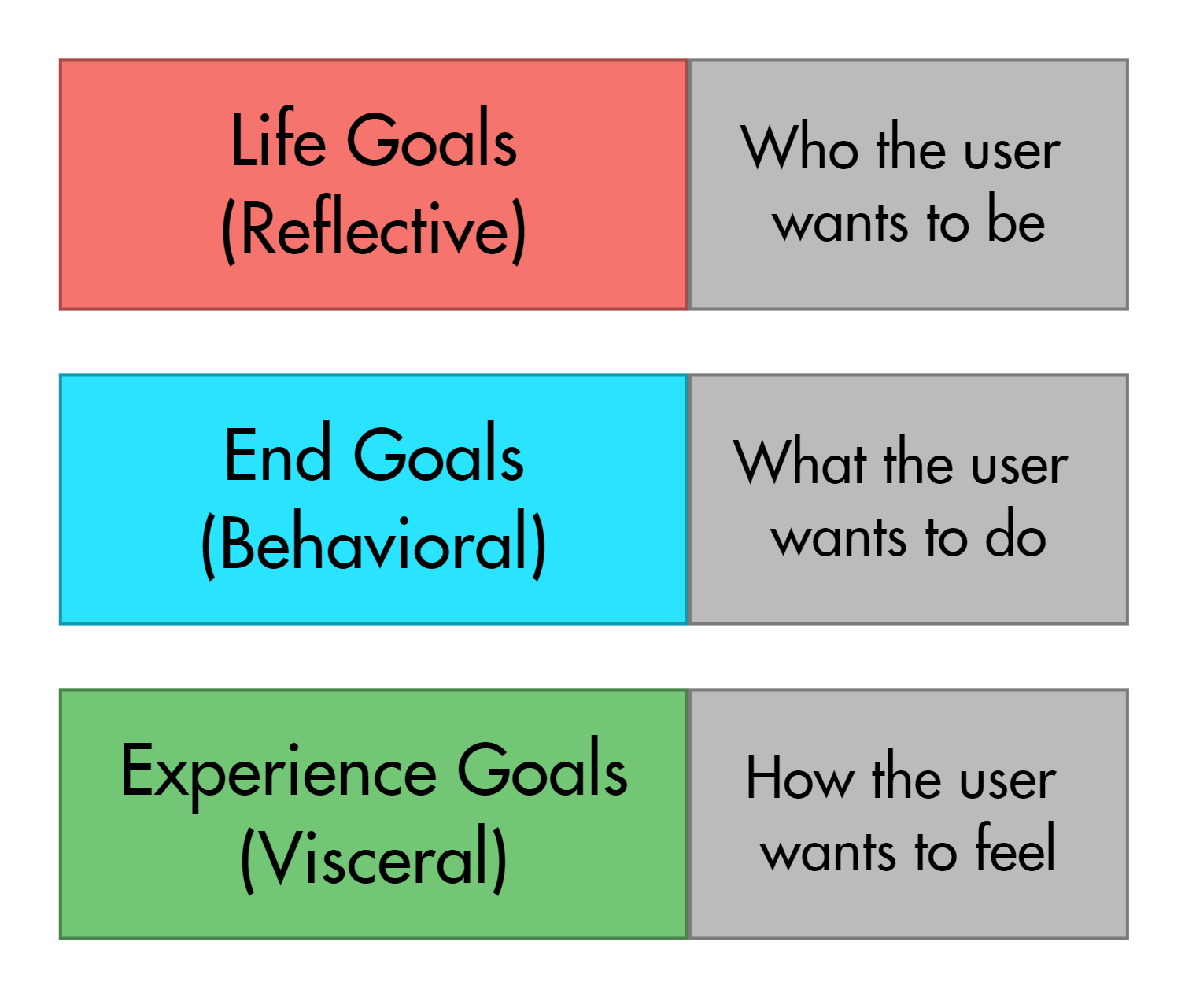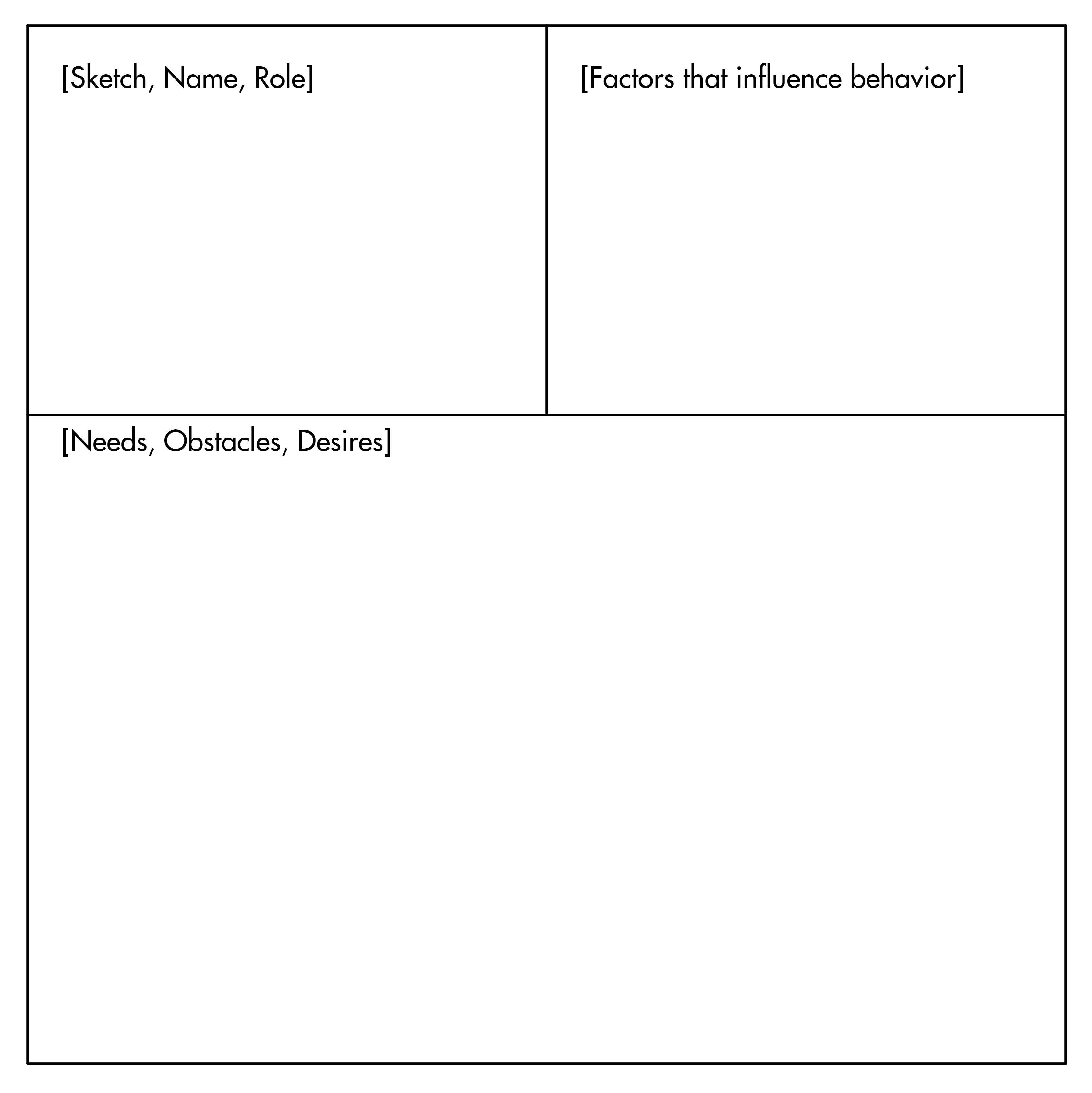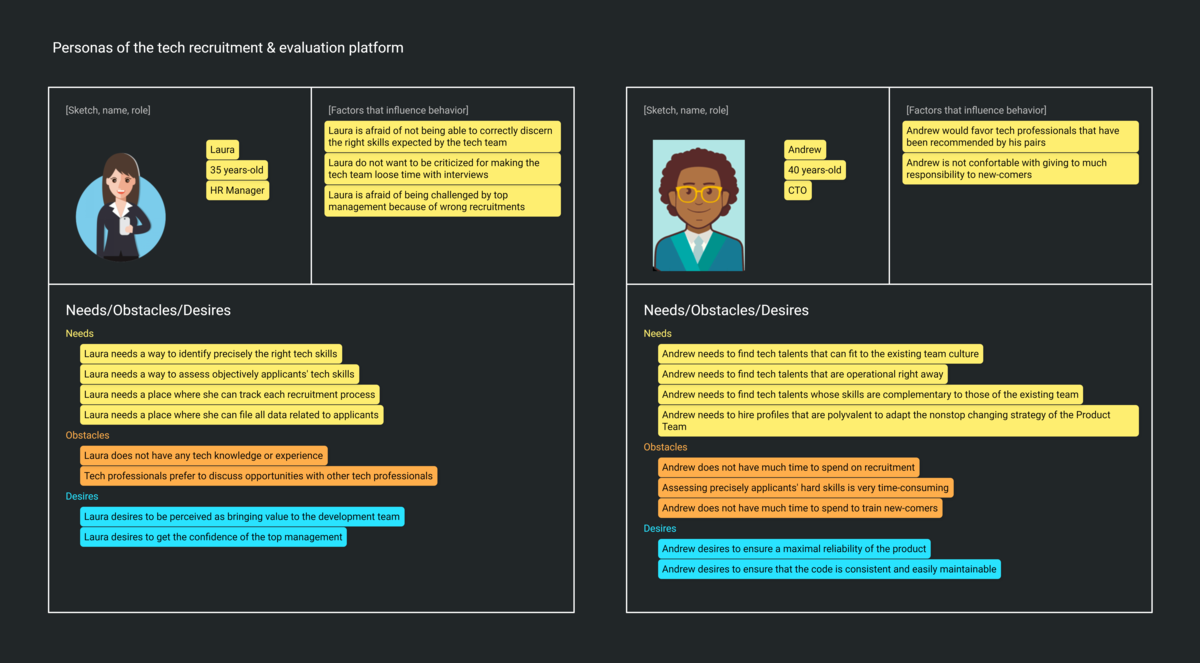What is a Persona?
Personas are descriptive models of users that provide precise information about how given groups of users behave, what they think and want to accomplish, and why. They highlight behavior and demographic patterns that arose during the research.
Personas have encountered great success in the design industry because they personify the targeted audience and help development teams feel more empathic about the users’ goals. More particularly, they prevent designers and developers from projecting their own goals, motivations, and mental models onto a product’s design.
Like most models, personas must be based on real-world observation. The primary data source should be derived from interviews and observations of actual and/or potential users. Market research data, surveys, and interviews with domain experts can also supplement the creation of personas.
Understanding users goals and emotions
Understanding personas is more about understanding motivations and emotions than it is about understanding specific tasks or demographics. That’s why Don Norman, in his book Emotional Design, introduced three different levels of cognitive and emotional processing: visceral, behavioral, and reflective:
- Visceral is the most immediate level of processing. It encompasses the intuitive decision-making that occurs when our senses are stimulated.
- Behavioral is the middle level of processing. It characterizes our everyday behavior, mainly mechanical and driven by basic interaction with our environment.
- Reflective is the higher level of processing. It engages conscious consideration and reflection of past experiences. It can enhance or inhibit behavioral processing and, over time, associate meaning and value with artifacts.

The three types of user goals
Based on this theory, authors of interaction design’s bible About Face linked those three levels of cognitive and emotional processing to three specific types of users goals:
- Experience goals, which are related to visceral processing: how the user wants to feel.
- End goals, which are related to behavior: what the user wants to do.
- Life goals, which are related to reflection: who the user wants to be.
Comment documenter un Persona ?
We propose a format inspired by Jeff Gothelf and Josh Seiden’s book Lean UX in the template. It is composed of three sections:
- The upper-left quadrant personifies the persona with a photo or a sketch, a name, and a role.
- The upper-right quadrant focuses on the information that can predict a specific type of behavior, such as demographics, behavior patterns, or any other attributes.
- The bottom half captures the decisive information about your persona: high-level needs, current obstacles faced, and desires as a person.

Giving your personas some context
Before brainstorming about the features that can address the needs described in your persona, it may be helpful to put them into action to identify potential opportunities better. Based on Geoffrey A. Moore’s bestseller Crossing the Chasm, we suggest creating two scenarios that describe both a day in the life of your persona before your product or service exists and after.
The scenario “A day in the life before” need to capture five elements:
- Scene or situation: Focus on the moment of frustration. What is going on? What is the user about to attempt?
- Desired outcome: What is the user trying to accomplish? Why is this important?
- Attempted approach: Without the new product, how does the user go about the task?
- Interfering factors: What goes wrong? How and why does it go wrong?
- Economic consequences: So what? What is the impact of the user failing to accomplish the task productively?
Then in the scenario “A day in the life after”, the idea is to take the same situation, but with your product or service in place:
- New approach: With the new product how does the end-user go about the task?
- Enabling factors: What is it about the new approach that allows the user to get unstuck and be productive?
- Economic rewards: What are the costs avoided or benefits gained?
